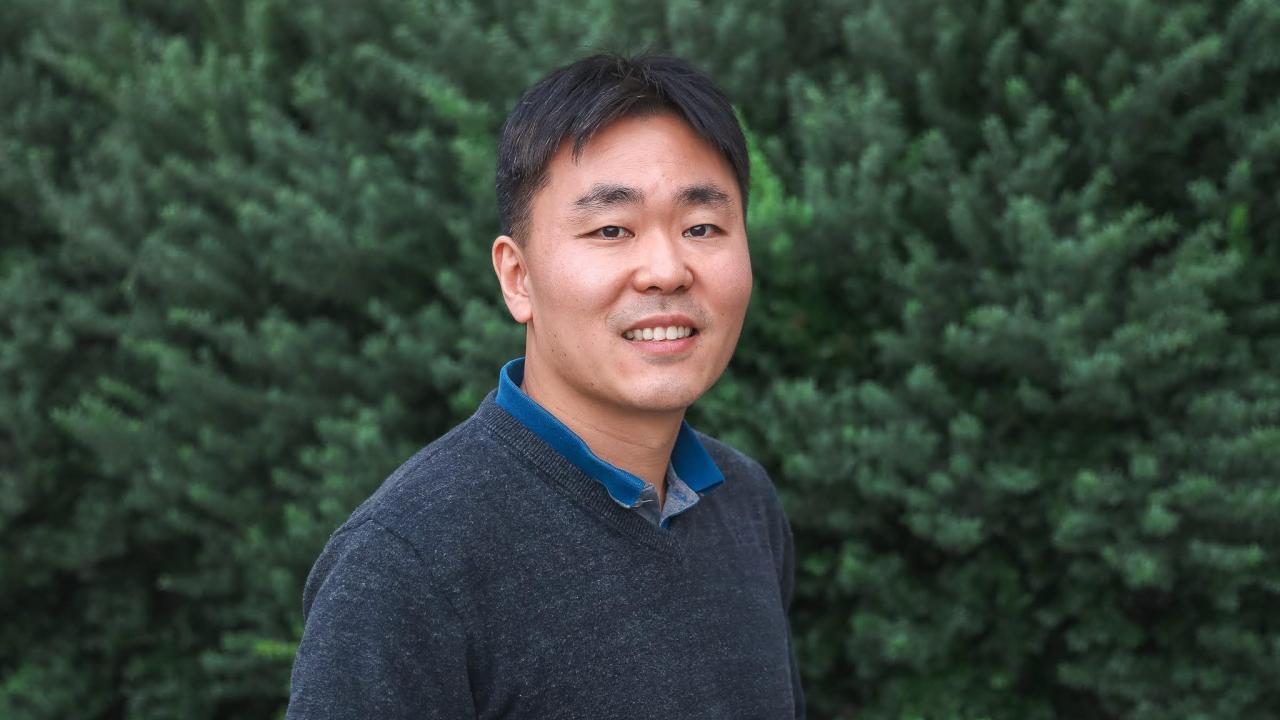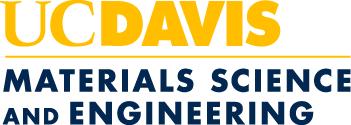
Seung Sae Hong: Pushing Materials to their Limit
From quantum computers to sustainable energy, the world needs to access new materials and material properties that will power the world’s next generation of technology. New assistant professor Seung Sae Hong pushes materials to their limits to find out what they’re truly capable of and unlock these new properties using the nanoscale and two dimensions.
In 2D materials, which have one nanoscale dimension that is only one or a few atoms thick, electrons and molecules behave quite differently. This can lead to exotic electronic and magnetic properties in some materials and more strength and flexibility in others, which can allow stretching and folding in otherwise fragile materials. These new properties allow Hong to “hack” them to make them behave in ways they wouldn’t in nature.
“I want to see what the limit of our materials is,” he said. “In many cases, bulk materials’ properties are already defined from nature and there’s not much room to change that, but on the nanoscale, you can design your materials in many new and different ways.”
2D like never before
Hong describes 2D materials as atomically thin pieces of paper, which can be stacked like atomic LEGO bricks that allow researchers to design new interfaces between different materials. These new interfaces generate new properties not observed in single-compound materials. Examples include generating a metallic interface between two insulators or creating a superconductor by putting two atomic sheets of graphene off-angle from each other.
2D layers also have superior mechanical properties, allowing extreme straining and shape deformation in 3D. This will allow researchers to tune a material’s symmetry, crystal structures and electromagnetic properties to suit different applications. Hong’s previous research involved extensively stretching 2D ceramic layers, which are fragile in bulk, but can be stretched like rubbers when they are very thin.
“By changing its shape, straining it or creating a new heterostructure, we can see new properties that we never expected before,” he said. “It gives me the ultimate degree of freedom to study and design materials—to find out what’s possible from the previously impossible”
To many, 2D materials are key to next-generation renewable energy devices because their surface properties allow them to efficiently convert light and chemicals into electricity. They also offer the potential for “smart materials” that can change their shape and property in response to stimuli such as heat, light, electricity or touch. These materials can be used to build flexible and wearable electronics that aren’t subject to traditional limitations.
“2D is such a unique and powerful dimension to design artificial materials in,” he said. “I first generate materials and then modify them in unconventional ways to harvest their new properties for information and energy technologies.”
Materials physics “at the bottom”
Hong, like many in materials science and engineering, began his academic career in physics. While earning his B.S. in physics at Seoul National University, he was stuck by famed physicist Richard Feynman’s quote, “there is plenty of room at the bottom,” referring to the new behaviors that emerge as materials get smaller and smaller.
“There is a new physics and new materials are coming out of this scale, and we haven’t nearly had the complete study to explore this opportunity,” he said.
He pursued this interest at Stanford University while earning a Ph.D. in applied physics, working on nanomaterials for electronics and sustainable energy. He continued on as a postdoctoral researcher in the department until joining UC Davis this fall. His research at Stanford has been published in Science and will serve as a foundation for his group's future projects.
As he arrives on campus and begins setting up his research program, Hong is excited to contribute to the College of Engineering’s strong tradition in materials science and engineering and thrive in the university’s diverse and collaborative environment.
“I really appreciate the diversity of campus,” he said. “Much like how new properties emerge at the interface between different materials, new ideas emerge when people from all different backgrounds come together.”
When he’s not at work, Hong is a family man who enjoys spending time with his young son.
“It’s a very rewarding experience to see him grow up and to learn and explore the external world,” he said. “Letting him experience the different things is the greatest pleasure I have so far.”
